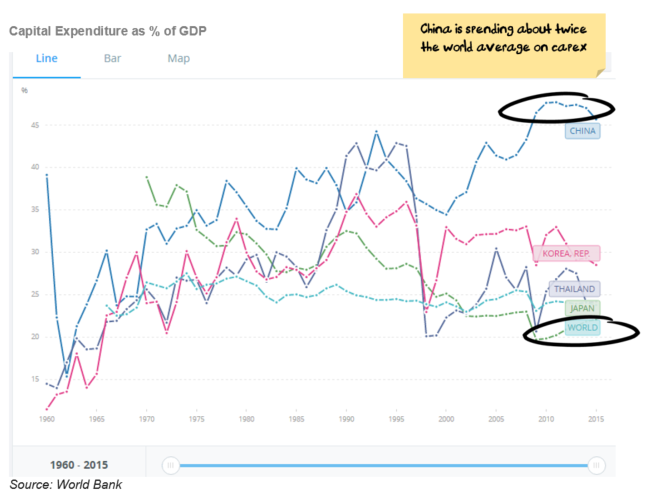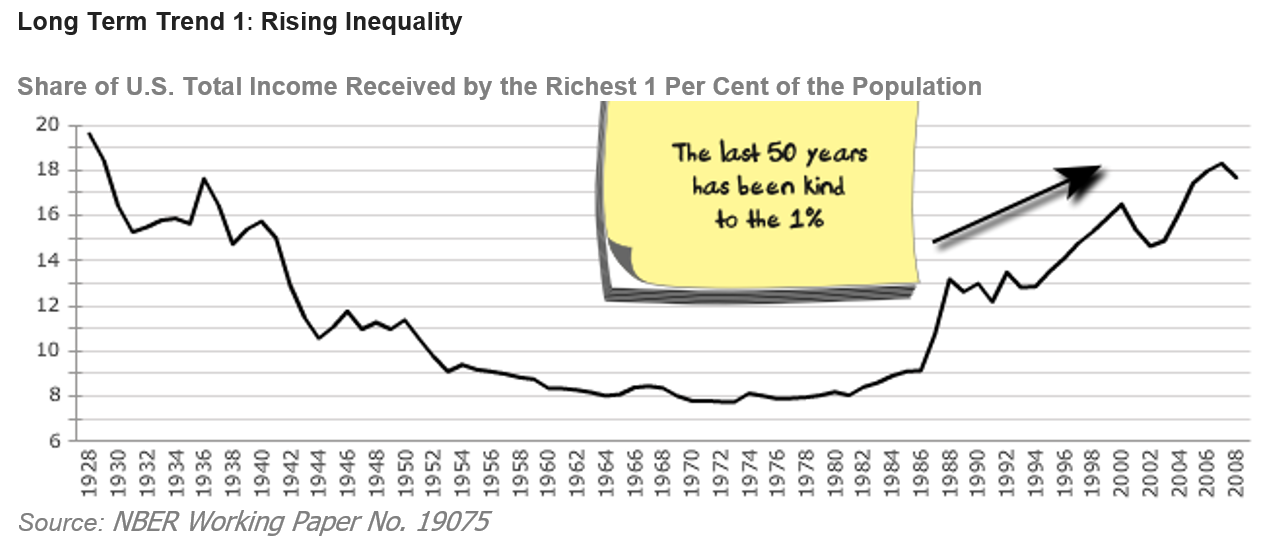Super Structuring

Given that superannuation is now worth approximately $3.5 trillion, it is unsurprising to see that there is a huge number of participants in the market. These companies and brands all appear to offer huge differentiations to each other, some with enormous marketing budgets to reach out to their members and prospective members.
Layers of spin and emotion aside, let’s face it, most super funds pretty much do the same thing but not all structures are created equally.
Money from members/investors is put into a structure of some sort and invested in markets. That’s it. Depending on what has been promised and what is commercially allowable, additional resources may include limited financial advice, online portals, and a member statement a couple of times a year.
So let’s have a look at the four main structures that most personal superannuation offerings boil down to (excluding SMSF's).
Superannuation Master Trusts
The predominant structure in mainstream superannuation is by far the Master Trust which entails a board of trustees and an appointed investment team. Good examples include, industry funds or other major offerings on the market. They offer a fairly straightforward entrance to financial markets for people with lower balances and can come with various levels of group insurance that can be cost-effective and easily obtained.
Over time some managers will do well and perhaps be awarded higher allocations, whilst underperforming managers may be looking for new employment. One common frustration with Master Trusts is the ‘closed shop’ nature of how a client’s money is invested. This can be for a number of reasons, examples being ‘preservation of intellectual property’ and some unlisted illiquid assets with questionable valuations. Often the top twenty holdings will be disclosed but you have no idea about what else is in the portfolio. You will find Master Trust super funds transparency sadly lacking. As always there will exceptions, but this is the rule.
Additionally, all income such as interest, dividends and distributions are shared across all members rather than attributed directly to the individual. This leads to poorer after-tax outcomes compared to individual ownership. This is particularly relevant for Australian shares as superannuation is a tax-effective place to hold these assets due to the franking credit refunds. In Master Trusts these refunds are watered down due to being shared across all members.
What is the consequence of all this? It is a lack of control. With limited levels of visibility and one's assets tied up in a unit price, your typical Master Trust investor is at the whim of the investment managers and control is generally relegated to choosing either investment mixes or for some funds with more options, broad asset categories. Thankfully adjusting is made simple, usually through an online portal and can be quite cheap (comparatively to broadly selling down shares for example) through a ‘spread’ or difference between the ‘buy’ price of an investment option unit, and a ‘sell’ price. These spreads cover transactional costs or are simply margin to the funds bottom line.
The ‘new black’ of Master Trusts is to offer limited access to the ASX and perhaps some term deposits and bond funds, usually with limitations on the amount of one stock you can hold and other various checks and balances. These ‘choose your own adventure’ options offer the ability for investors to get a taste of the gritty (and time-consuming) world of fund management at a granular level. However, the trading mechanics are often quite basic and with the relevant fees added in, not hugely different to some of the other structures listed below.
So where does this leave you? – well simply put if you are happy with lower levels of visibility, a basic structure and limited control on who manages your money it’s pretty hard to go past a Master Trust for both cost and effort. If some component of this type of structure frustrates you (and believe me you are not alone) then read on!
Wraps / Platforms
Wraps and platforms are often the natural next step for people looking to take some control of their investments however, it usually comes with added costs. Investors now have access to managed funds, individual shares, and term deposits which they can either transact upon themselves or often, with the help of an adviser.
Investment decisions are generally made at the ‘model portfolio’ level which depending on the research house and/or institution's relationship with each stock in question, can be exposed to bias and conjecture.
Once again based on the individual, the amount of funds under management and the strength of the adviser relationship, use of these platforms can result in good, bad and indifferent outcomes for clients.
In comparison with Master Trusts, Wraps do bring some significant benefits. Individual ownership immediately jumps to mind. The ability for an investor to benefit directly from dividends and associated franking credits is a big difference to the fund model where these benefits are ‘washed’ through the pool. Plus you have the ability to transact on certain investments for tax purposes which can help to minimise tax liabilities and better a client’s position.
An investor also has the ability to ‘in specie’ stock holdings in and out of the platform, allowing existing portfolios to be brought into the fold. Transparency is high as investors now have a window into their entire portfolio. However, some control is still lost through needing to use either an adviser or failing that, a clunky interface to buy and sell.
Limitations that I often find with Wrap platforms include the ability to choose ‘bank’ only term deposits (generally aligned with the platform provider). Internal costs of managed funds are not taken into account which need to be added on top of the Wrap platform fees. Most Wrap platforms have limited or no direct international share capabilities outside of exchange traded funds and managed funds. Depending on the provider, platform administration costs can also be significant, which is disappointing given it really is just a pumped-up share trading platform which most major online brokerages offer for free.
Individually Managed Accounts (IMA) and Separately Managed Accounts (SMA)
I have grouped the last two together due to their similarities in structure. IMA & SMA's have been around for over a decade and are growing more popular as their feature sets and capabilities grow. Once typically the domain of boutique broking houses, they have become more popular as their benefits have been understood and enhanced.
Both offer individual ownership like a Wrap, have the ability to ‘in specie’ stock in and out and generally offer the highest level of transparency of where a client’s money is invested. The major difference now lies in the investment management and decision-making of the portfolio and how both current and new money is invested.
The easiest way to think of both types of accounts is as a ‘managed investment’ tailored for a client and sharing both the ease of use and maintenance for the end user, along with most of the associated benefits of a Wrap-type product.
An IMA means the investment manager has ‘discretion’ to transact on a client’s account at will, with the client usually informed of trade activity through an email after the fact or through an online portal.
In the SMA scenario, the investment manager creates model portfolios that are then replicated to each client’s account, with reweighting typically done automatically and new money from contributions also automatically assigned to either new or existing models.
IMA’s can be thought of as the ‘bells and whistles’ style account with an investment manager able to individually transact on each account, perform rebalancing and depending on the broker, create individual ‘self-directed’ accounts that a client can have a play with. These accounts typically involve an advice relationship that ensures that each portfolio is tuned to the individual’s circumstances. Trading costs are usually higher, meaning generally higher balances are required to ensure decent sized exposures to individual stocks are maintained and benefits like franking credits and currency plays are not eroded.
SMAs, on the other hand, typically start with smaller balances that can benefit from ‘group buying’ of stock to reduce trading costs and investors still retain direct ownership with the associated transparency and tax benefits.
Nucleus Wealth uses a Separately Managed Account structure for Personal Super on the Praemium platform. With these accounts, you have a range of model portfolios to choose from, where Nucleus Wealth will make the investment decisions on your behalf. One added benefit is you also have the ability to customise your portfolio to suit your personal ethical values, beliefs or specific market views.
A limitation of a SMA is the inability to tailor accounts individually to manage tax issues. This may dictate that an investor may tend towards the IMA structure to yield maximum benefit.
As always, it depends. Personally, I have found the IMA/SMA structures offer the best solution for clients who value the transparency, individual ownership and tax benefits, if the money is invested properly.
So what sort of balances are we talking to differentiate between the two? – Well that can depend on the individual client. Generally, IMA’s require much larger balances as an advice relationship is needed whereas SMA’s have much lower starting balance requirements and are generally lower cost than Wrap platforms but usually slighlyt above Master Trusts.
Below is a rough comparison guide for each structure

You can book a call with me to review your super and your current structure as I am always happy to take a deeper dive.




